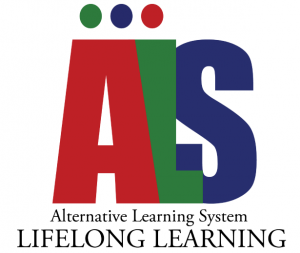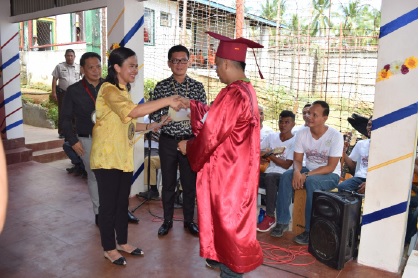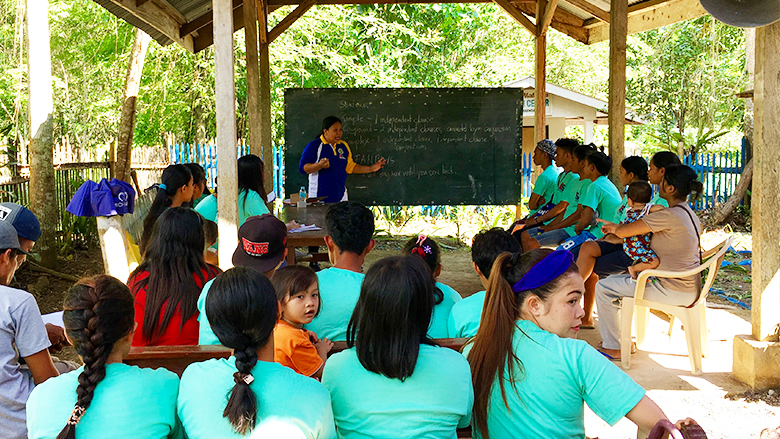- Alternative Learning System (als) Is An Example Of Formal Education
- Alternative Learning System Modules
- Alternative Learning System Modules
Aug 27, 2020 The Philippine Department of Education (DepEd) has just released the results of the Alternative Learning System (ALS). Release of 2012 ALS A&E Results in March 2013 Many of the examinees of the Alternative Learning System (ALS) Accreditation & Equivalency (A&E) held in November and December 2012.
- Alternative Learning System(ALS) Iriga's cover photo. Skills Training Nov. Livelihood skills training nov.
- The Alternative Learning System (ALS) is a free education program implemented by the Department of Education (DepEd) under the Bureau of Alternative Learning System which benefits those who cannot.
- The overall goal of the learning continuity plan for ALS is to sustain the gains of the Duterte administration in the delivery of quality and relevant second chance basic education programs for out-of-school youth and adults while ensuring the health and safety of both learners and teachers during the COVID-19 emergency and in the transition to the new normal.
WHAT IS THE ALTERNATIVE LEARNING SYSTEM (ALS)?
ALS stands for Alternative Learning System. It is a free education program in the Philippines implemented by the Department of Education (DepEd) through its Bureau of Alternative Learning System (BALS).


It is a modular, non-formal education program for dropouts in elementary and secondary schools, or any Filipino regardless of age needing elementary or high school education and diploma.
WHAT IS AJCMFI-ALS?
Arnold Janssen Catholic Mission Foundation, Inc.- Alternative Learning System (AJCMFI-ALS) is a non-government service provider of ALS fully accredited by the DepEd.
WHO IS ALS FOR?
ALS seeks to help out-of-school youths (OSYs), non-schooled children and adults who were not able to attend school at any time or complete their elementary or high school for whatever reason.
WHY IS ALS NEEDED?
Education gives an individual tools needed to be gainfully employed and self-sufficient as well as increases self-worth. Education is vital in fighting poverty. As statistics have shown, only six (6) out of ten (10) grade one enrollees finish elementary and only four (4) finish high school. ALS caters to those who were unable to attend school or finish elementary or high school.
WHAT IS BEING TAUGHT IN ALS?
ALS has three levels: Basic Literacy, Elementary and High School.
In the Basic Literacy Program (BLP), reading, writing and basic math are taught. Those who are non-literate, or have not attended any formal schooling at any point in their life schooling, are required to start here.
The elementary and high school levels prepare its respective learners with the knowledge required to pass the Accreditation and Equivalency Test (AET) given by the DepEd to both levels.
WHERE IS ALS BEING TAUGHT?
ALS has two (2) settings, school based and community based.
School based setting takes place in classrooms in public schools if DepEd managed, or private schools if managed by private schools that are accredited service providers.
Community based setting takes place in barangay halls or barangay provided spaces, community learning centers provided by public or privately run institutions, or service providers’ own learning centers. DepEd’s mobile classrooms also belong to this setting.
WHAT IS THE DIFFERENCE BETWEEN FORMAL EDUCATION AND ALS?
The following differentiates Formal Education from ALS:
Setting: In formal education, classes are primarily held in classrooms while in ALS, classes are held either in barangay hall or barangay hosted space, in a regular classroom in cases where the service provider is a private school, in a community learning center hosted by the service provider, or in a space allotted by an institution such as the Bureau of Jail Management and Penology (BJMP).
In formal education, the one imparting knowledge is called a teacher, while in ALS, the person is called an Instructional Manager (IM). Likewise, the one being taught is called a student, while in ALS, the person is called a learner.
Mode of Learning: Formal education uses Pedagogy or the science of child learning, while ALS uses Andragogy or the science of adult learning.
In formal education, students learn at the same pace, in ALS, due to its modular nature, learners learn at their own pace. Likewise, students use books or ebooks (for the technologically advanced schools), while in ALS, learners use printed modules that are self-paced, self-instructional, indigenous, and integrated.
Knowledge taught is divided and classified into subjects such as the five major subjects: Filipino, English, Math, Science and Makabayan, while in ALS, knowledge imparted are divided into the five learning strands.
Completion: In formal education the elementary course takes six (6) years to complete and another six (6) years for high school, while in ALS it takes about ten (10) months each for the elementary and high school courses.
Upon completion of a course, formal education gives a school diploma signed by the head of the school, while in ALS, after passing the Accreditation and Equivalency Test (AET) given by DepEd, ALS graduates will receive a diploma also given by DepEd and signed by no less than the Secretary of Education.
WHAT ARE THE FIVE LEARNING STRANDS OF ALS?
The five learning strands form the basic curriculum for the Alternative Learning System:
Learning Strand 1. Communication Skills (Filipino and English)
The goal is to help learners achieve the ability to clearly express one’s ideas and feeling orally and non-verbally using listening, speaking, reading and writing skills.
Learning Strand 2. Problem Solving and Critical Thinking (Mathematics)
The goal is to help learners achieve numeracy skills, openness to change, awareness of options, ability to make critical and informed decisions, innovativeness and creativity, scientific thinking and future orientation.
Learning Strand 3. Sustainable Use of Resources and Productivity (Science)
The goal is to help learners possess the ability to earn a living (employed or self-employed), sustainable use of resources including time and productivity and use of appropriate technology.
Learning Strand 4. Development of Self and a Sense of Community
The goal is to help learners possess the abilities and traits of self-development, sense of personal and national history and identity, cultural pride and understanding of civil and political rights.
Learning Strand 5. Expanding One’s World Vision
The goal is to help learners possess the ability to respect diversity, peaceful resolution of conflicts, global awareness and solidarity.
WHO ARE QUALIFIED FOR ALS?
Any Filipino regardless of age, sex, creed, affiliation, status is qualified to enroll in ALS.
WHAT ARE THE FEES TO BE PAID IN ALS?
ALS is completely FREE. No fees are collected for enrollment or for learning materials used.
WHERE CAN I ENROLL IN ALS?
You can inquire with your barangay officials if ALS is offered in your area.
Arnold Janssen Catholic Mission Foundation, Inc.-Alternative Learning System (AJCMFI-ALS) has learning centers in Dasmariñas City, Bacoor, and Tagaytay City in Cavite, Manila and Quezon City in the NCR, and Rio Tuba in Palawan.
DepEd-ALS has both school based and community learning centers in various parts of the country.
There are also other Non-Governmental Organization (NGO) service providers of ALS.
WHAT ARE THE REQUIREMENTS FOR ALS ENROLLMENT?
Alternative Learning System (als) Is An Example Of Formal Education
For the BLP applicants are only required to bring their birth certificate

Alternative Learning System Modules
For the elementary level 1. Applicants should be at least eleven (11) years old. 2. Form 137 from former school.
Alternative Learning System Modules
For the high school level 1. Applicants should be at least fifteen (15) years old. 2. Form 137 from former school, or ALS Elementary Diploma.
